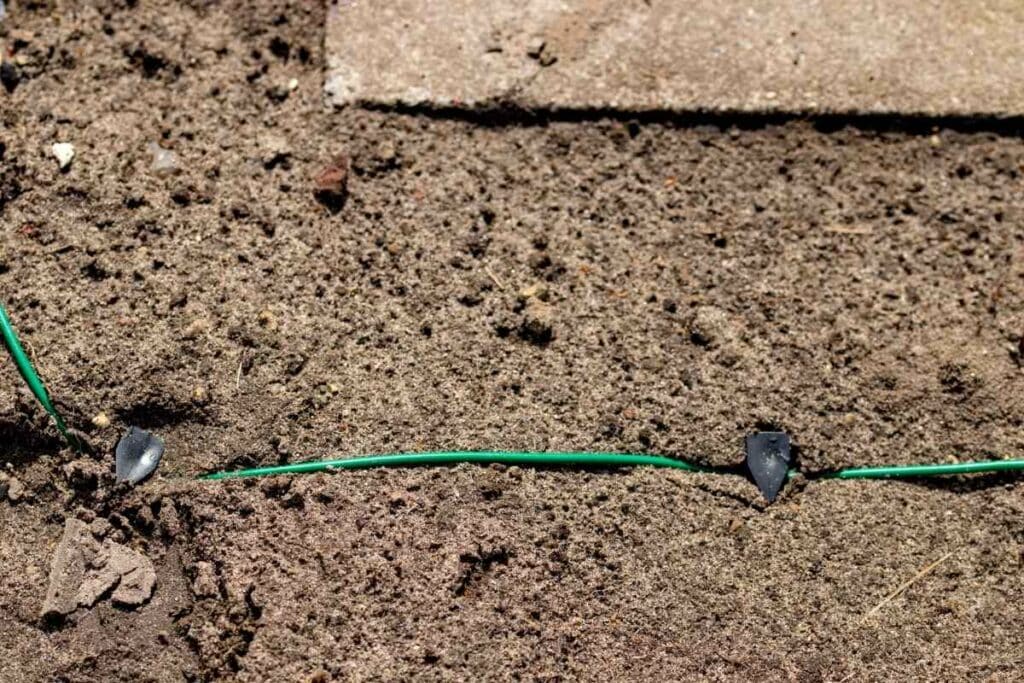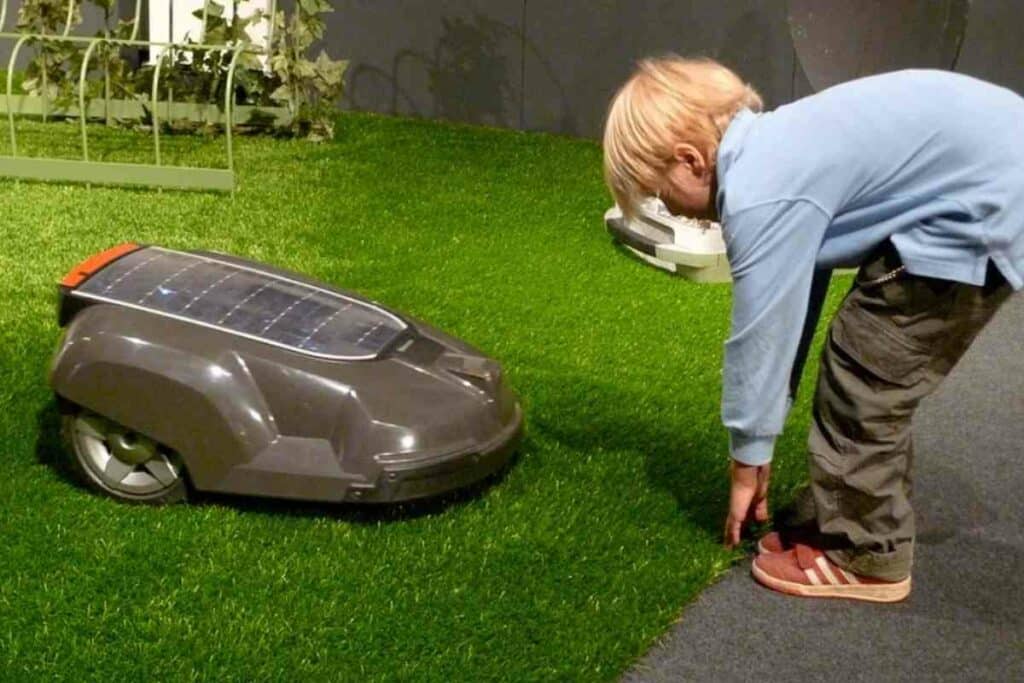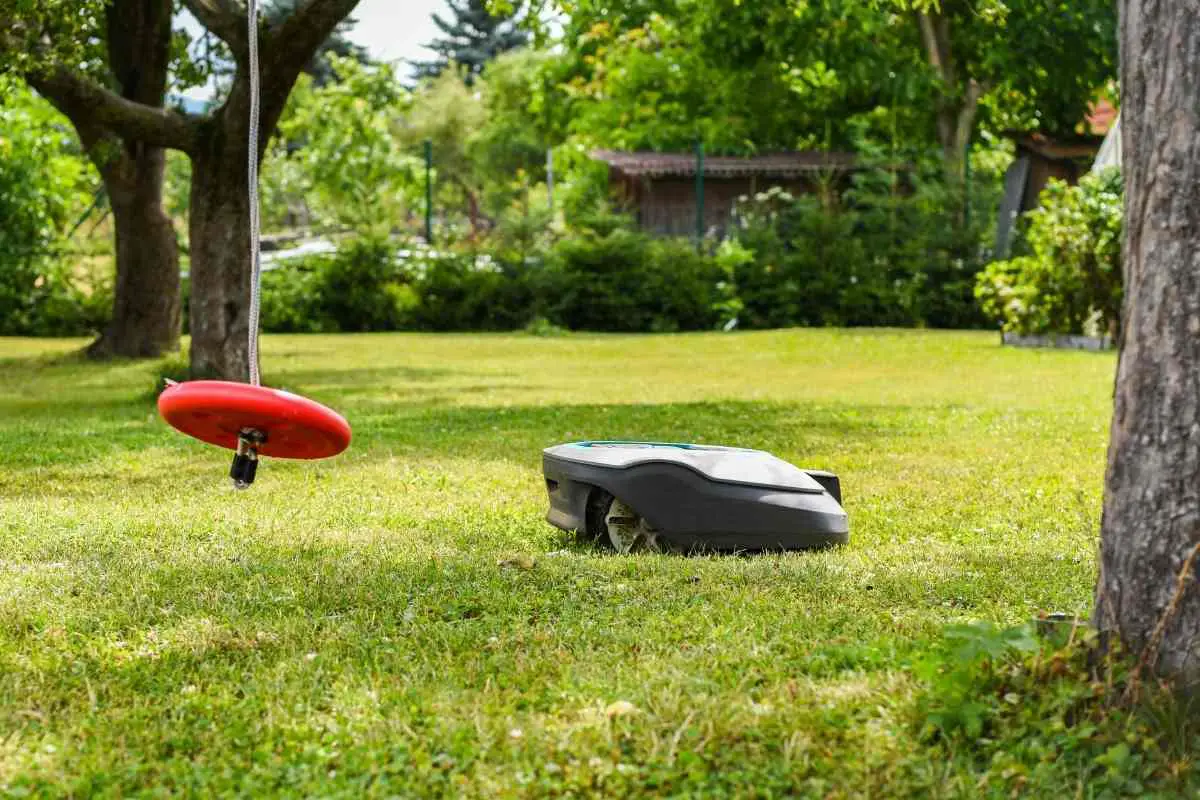If you have trees on your lawn you may be wondering if a robotic mower can cut around trees. Trees of any size increase the complexity of a lawn and are potentially a significant obstacle for both conventional and robotic lawnmowers.
Experienced gardeners are well aware that garden equipment can do serious, if not fatal damage to trees.
The risk of harm from a mower is especially great when a tree is young so it’s understandable if you are concerned about the potential for damage from a robotic lawnmower.
In this article, we will explain how robotic mowers cut around trees keeping them safe from damage, and a few things you can do to make sure that both your tree and your robot mower are extra safe.
Thankfully robotic mowers can handle navigating around common garden objects like trees
Robotic mowers have been designed with consideration of the common objects and hazards the machine will encounter in the average backyard.
Trees are going to be a priority and manufacturers have developed technology that effectively senses and responds to trees and other obstacles so that the robotic mower can effectively navigate around them.
If a robotic mower approaches a tree, its array of onboard sensors will detect the physical obstruction prompting the robot to stop mowing, reverse and change direction.
This process is continued repeatedly from every direction in which the tree comes into range. Eventually, the lawn is fully cut without any contact or damage to nearby trees.
Ultrasonic sensors are critical safety and navigation technology for robotic mowers
Robotic lawnmowers use ultrasonic sensor technology to navigate their environment without human intervention. The boundary wire that is used to demarcate the lawn cannot assist the robot with sensing obstructions in its path while on the lawn.
Read if all robotic mowers need a boundary wire?
The autonomous mower uses ultrasonic sensing can detect the terrain it is on along with objects that are in its path.
An array of sensors emit high-frequency sound waves (beyond human hearing) that bounce off different objects and are reflec to a transducer on the mower.
Processors in the robotic mower complete complex distance and acoustic measurements that help the mower detect the presence of an object by the differences in echo response.
Correct insulation and mounting of sensors on a robot mower will detect trees
The transducers used on robotic mowers can cope with sensing objects in all weather conditions.
They are usually closed top transducers that are surrounded by a soft material that allows the sensor to vibrate and a firm housing that keeps it held in position on the front of the lawnmower, facing outwards just above the ground.

Without secure mounting, the mower may detect objects that are not theirs.
Depending on the sensitivity of the transducer, it detects objects within a 15 cm range of the robotic mower as hazards and prompts the mower’s electronic systems to instruct the mower to change direction.
The mower then searches for an unobstructed path to continue mowing.
Sensor technology makes robotic mowers safer for trees and Children
The sophistication of robotic lawnmowers makes them the safest choice for mowing lawns where trees are present. The damage done by other grass-cutting appliances can prove fatal to trees.
Mowers are notorious for inflicting a variety of tree injuries that threaten the health of a tree and structural integrity.
The blades on a lawnmower can damage the bark of the tree wounding it and introducing disease.

One of the most vulnerable areas of a tree is where the tree comes out of the turf, known as the root flare area. Mowers of all kinds can strike this area, theoretically including robotic mowers.
Damage to this area can compromise the cambium of the tree, a specialized vascular network that transports nutrients throughout the tree.
Lacerations or removal of protective bark by a mower or weed eater will disrupt this transportation system, causing long-term damage through the introduction of pests, fungi, and diseases that further weaken the tree.
A dead tree on your lawn cannot be left as it may collapse on anyone who uses your lawn.
Read our review of the Best Robotic mowers available in the USA here.
Can a robot mower cut through bark?
A robotic mower is certainly powerful enough to cut through the bark of the tree, but the sensor technology described should keep it away from a tree.
The edge cutting function of some mowers exposes more of the blade which could potentially damage a tree in the grass or exposed roots could be damaged by the mower running over them.
Strategies for protecting your trees
If you are still concerned about the potential for damage to your tree, you may want to consider the ways in which you can protect your trees.
Here are some methods you can try:
Create a boundary around your tree with the robotic mowers perimeter wire
Cordoning off your tree with perimeter wire makes it certain that the robotic mower will not approach or harm your tree.
This is because the wire sends out a signal that demarcates the edge of your lawn, causing the mower to automatically change direction.
Any grass close to the tree that is on the other side of the boundary can be trimmed manually.
Build a protective structure around your tree
A young tree is not only at risk of damage from a mower, but also wildlife, pets, and backyard rough and tumble!
For complete peace of mind, you may want to build one of the following structures around your sapling:
- Two short posts with flexible mesh
- A plastic tube and post
- Chicken wire or weld mesh wrapped around the trunk and staked
- Three to four posts with timber top bars
- Iron welded railings
Rounding up
As you can see, robot mowers are a safe option for trees as they can simply cut around them.
If you have trees in your garden, they could be more risk to your robotic mower than the other way around as leaves, pine cones, fallen fruit, and branches can all potentially damage the blades and underside of a robotic mower.
But with proper preparation and monitoring, your tees and robot mower can share your garden happily.
